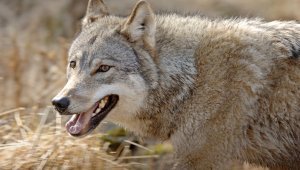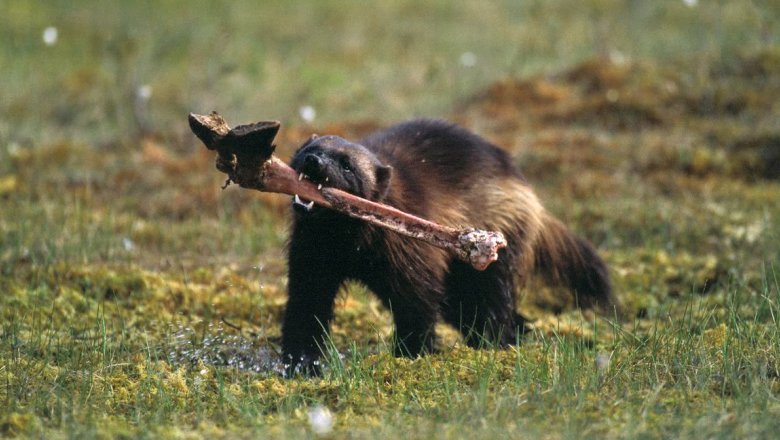The wolverine is a scavenger but also a skilful hunter
The wolverine is a scavenger of the boreal forests, but it also hunts small and medium-sized prey, including reindeer and forest reindeer. Small mammals, hares, foxes, birds and frogs as well as berries are also part of its diet.
The wolverine's diet varies from one region to another. The main food source of females based in Eastern Finland is moose, which they find as carrion in wolf territories. In the reindeer husbandry area, they mainly feed on reindeer. In a Swedish field research site close to Northern Lapland in Finland, wolverines equipped with radio collars killed on average two reindeer a month in winter and slightly more in summer. In Finland, reindeer killed by wolverines are almost exclusively recorded in winter. Wolverines in the boreal zone also prey on mountain hares. Population peaks of small rodents have been found to influence the numbers of wolverine cubs in Scandinavia.
How does the wolverine hunt?
As a predator the wolverine is clumsy when compared to the other large carnivores in Finland. If the snow conditions allow it, the wolverine will prey on reindeer but it can't take down an adult moose. The snow has to be deep and soft enough so that it will support the wolverine but not the larger prey animal.
The wolverine is considered a cruel beast because it doesn't always kill the reindeer instantly but instead might paralyse it by biting it in the spine. The distance between the wolverine's canines is between 25–35 millimetres. If the wolverine doesn't manage to immediately incapacitate its prey, the surrounding terrain will often show clear signs of a fierce struggle.
In the winter the wolverine may kill several reindeer in quick succession. This is typical weasel behaviour: they kill animals for storage, so to speak. The wolverine often returns to the carcass, just like the bear. It rips off the prey animal's neck tendons and rarely leaves any claw marks on the animal. The wolverine also often detaches the prey animal's head.



